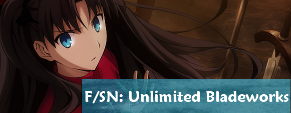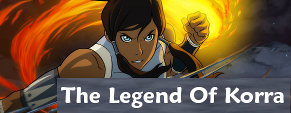Review-Roundup: Death Parade 04, Rolling Girls 03/04
![[C12] Death Parade - 04.mp4 - 00003](https://otakuness.files.wordpress.com/2015/02/c12-death-parade-04-mp4-00003-e1422917819664.png?w=604) A satisfying and ambiguous conclusion to a dark little episodic story.
A satisfying and ambiguous conclusion to a dark little episodic story.
This time I review:
Death Parade 04: Once again two people play for their fate in the afterlife. And the series continues to not really copy the expectations set up by the first episode in that regard.
Rolling Girls 03/04: Nozomi & gang travel to another Otaku-Eden whose hero is forced to ask herself how much she is prepared to sacrifice in order to satisfy her selfish desires.
Death Parade 04 Review:
![[C12] Death Parade - 04.mp4 - 00000](https://otakuness.files.wordpress.com/2015/02/c12-death-parade-04-mp4-00000-e1422918434972.png?w=604) Ah, the subversion-joke based on misdirection. In one moment you think the series wants to go for the typical “Hey, you looked better on TV than you do in real life, to be honest.” but then it turns it around and goes for the complete opposite. They should’ve made it more absurd by the woman admitting that they add make-up to make her actually look older on the show. As it is… a pretty mediocre little joke.
Ah, the subversion-joke based on misdirection. In one moment you think the series wants to go for the typical “Hey, you looked better on TV than you do in real life, to be honest.” but then it turns it around and goes for the complete opposite. They should’ve made it more absurd by the woman admitting that they add make-up to make her actually look older on the show. As it is… a pretty mediocre little joke.
Episodic storytelling has one big hurdle to overcome in the form of story-arcs. Ultimately the series has to choose between trying to reinvent its episodic formula again and again or settling into a safe routine. And the more episodic the storytelling gets, the easier it is to settle down and just do the usual thing. If you go far enough, the series would cease to have any sort of arc-structure and would just become an anthology of independent stand-alone stories. So the sweet spot for episodic storytelling is somewhere between the two extremes of anthology-like stand-alone episodes and having the usual continuous serialized format. At the same time, the worst you can do with episodic storytelling can also be found somewhere between those two extremes. The difference between a good episodic series and a bad one is a subtle one therefore.
In contrast to what one may believe, episodic storytelling isn’t a way to forego any sort of arc-like storytelling but instead it gets compartmentalized as story-arcs happen on a macro- and a micro-level. Depending on how an episodic series treats these story-arcs you either get a series that seems stuck in its habits or one that actually tries to constantly create new reasons for sticking around. It’s really in how a series approaches its central story-conceit where you can see how ambitious the series is. The most important element of a good episodic series is what it does on the macro-level. It’s those story-arcs that experience build-up during the entire series (or just one season) and then lead to a conclusion which validates at least most of the things that have happened on the micro-level.
Of course, it’s too early to say what exactly Death Parade is going for on a macro-level. Still, this episode is very promising in how it approached the storytelling on the micro-level so far. First of all, the episode mostly ditched any sort of exposition-sequences concerning the central story-conceit of the series. This allows for the two dead people to have far more space for characterization and this episode is a great example of how effective the series’ writing has become thanks to the lack of tedious exposition. Gone are the forced flashbacks from the first time that clearly drove the story forward in an artificial manner. They still are there but in this episode they didn’t happen frequently and rather than letting them drive the story, it’s how the characters react to the memories that drives the story forward. And with the extra-time this episode was actually capable of achieving that.
The second thing is even more important: The series isn’t establishing habits. Not only the themes of each episode had been very different but the way the episode develops is also very different each time. I guess, the only discernible common elements of the three stories are that the dead people always seem to have regrets, that life has always treated them unfairly in some way and that the moral conflict isn’t about “good vs. evil” despite the competitive nature of the setup. Aside from that, though, this fourth episode already found ways to subvert expectations and break the formula set up by the previous three episodes. Stuff like the dude and the woman not knowing each other personally, the woman beating the dude up in her desperation and the way it all ends are great examples of how to do episodic storytelling right.
Even without the benefits of being able to subvert expectations and having more time since the series can skip most of the exposition now, this episode’s story is way more interesting than the other two in how ambiguous its characters are. The second story was more heartwarming and the girl’s background was the only good plottwist. But this third story really confronts you with individuals that are deeply flawed. In the end, the story-conceit of the series actually sets up very different expectations from what the series actually seems to be doing. Decim himself mentioned it already a couple of times but it seems like the real objective of this setup is to confront dead people with their own darkness before having to face ultimate judgment. And it seems the reason for that is that no character is inherently evil despite having this dark side within themselves. The revelation of discovering that darkness and showing how the dead people handle said darkness is even more important than determining whether they should go to “heaven” or to “hell”. And it’s that sort of ambiguous storytelling which has made this best episode of the series so far and in general the series has been getting better with each new episode so far.
Episode-Rating: 8.5/10
Rolling Girls 03/04 Review:
![[C12] The Rolling Girls - 04.mp4 - 00000](https://otakuness.files.wordpress.com/2015/02/c12-the-rolling-girls-04-mp4-00000-e1422918817921.png?w=604) It’s fitting for the series’ theme of growing up that this would be what terrorists would do: Remind teenagers that their life-decisions are making their parents cry. Mind you, the series itself is all for teenagers leaving the protection and guidance of their parents behind in order to grow up.
It’s fitting for the series’ theme of growing up that this would be what terrorists would do: Remind teenagers that their life-decisions are making their parents cry. Mind you, the series itself is all for teenagers leaving the protection and guidance of their parents behind in order to grow up.
The way many animes look at the lives of teenagers you can learn two things about growing up: One, being an adult is all about “that comes later” for a teenager. Two, the couple years you spend as a teenager are the greatest time of your life (despite then having another couple decades to top that)… actually, these days anime-teenagers can already get nostalgic thinking about their elementary-school-days as if adult-life is some sort of mysterious after-life. Add to that the whole moe-thingy and the loli-fetish and you actually get very few genuine coming-of-age-stories in animes. “Growing up” has been turned into this set of ideals the hero has to deal with in order to kick evil asses. That growing up isn’t really about setting out for the world of adults with your best intentions after having become a glorious hero (and finding the love of your life as well, or some harem-equivalent of that thing) doesn’t seem to matter. Growing up is about learning how important it is to do the right thing and how hard doing just that is. That’s the simplified version of that, of course. Rolling Girls is indeed one of those few animes that seems to take growing-up seriously.
A big part of that is, of course, its setting. This otaku-fied setting is brimming with characters that have the power to follow their dreams without learning how to properly deal with responsibility. Despite having this ideal, surreal otaku-version of the world, the characters still have to struggle in order to find happiness. What makes this series so compelling is how under this bright, flashy surface character have to deal with their personal conflicts and troubles. On the surface it may seem like a really surreal utopia but beneath it you get these warped versions of adolescent drama.
That alone wouldn’t make for a great series, of course and it’s the 4th episode (more so than the 3rd episode) that shows off the strengths of the show by having the characters act reasonable. Instead of going for some sort of flashy confrontation as a shounen-show usually does or set up this stage for a sentimental scene, the series doesn’t end on a dramatic note but rather the somewhat anticlimactic notion of being mature. Instead of cultivating some individualistic notion of “You need to be the most awesome person ever!”, the series shows in this 4th episode how it’s not about what you want but what the people around you need. At the same time, this doesn’t mean you should forego ever following your heart but rather you’re supposed to temper your desires for the sake of the people around you.
The way Thunderoad’s character-arc has developed over the course of these two episodes is a very good example of the show’s strengths when it comes to characterization. The start of her arc is actually VERY dark, if you think about it… well, relatively speaking, of course. She’s one of the Best, the superheroes of this setting and still she doesn’t want to be that hero anymore. She doesn’t want the responsibility of being a captain anymore but she just can’t follow her heart’s desire as some terrorist-group is continuing to harass Always Comima. Noriko, her subordinate, suspects that Thunderoad wants to quit and so tries to force her to keep being Thunderoad. And so you have one character who desperately wants to change in order to get something she can’t have while the other girl is desperately trying to keep things as they are in order to protect all the things she cherishes.
What makes the story-arc work is that in the end neither of them gets exactly what they wanted. They are forced to settle for a compromise. And it’s that what makes the ending seem like a mature way to end a coming-of-age-story as it isn’t about some sort of victory or tragic loss but just the acceptance of how nothing quite works out as you wish it to be and how you should accept the responsibility of still trying your best in such a situation.
Visually the art-design needs to be recommended in this series. The backgrounds in this series are never boring to watch and Always Comima has a very individualistic and surreal charm to it. It has to be said, though, that the animations-department is obviously strained. At the beginning of the third episode the animations-department has fucked up in a big way: The main-gang talks about the moonstone and during that conversation Hibiki grabs the stone and holds it up against the sunlight. Then Chiaya jumps up and grabs the moonstone out of Hibiki’s hand. But then a few shots later, Hibiki is once again holding the moonstone for NO discernible reason. Also, that animation-sequence of Hibiki holding the moonstone and Chiaya getting it back by jumping a little has been obviously repeated in the 4th episode. Maybe they will fix this for the DVD/Blu-Ray-release but stuff like that shouldn’t be there. With such great art-direction, it’s just a waste to have such a flawed animation-direction.
Another thing that made me worry during the third episode was the series’ meta-story. I mean, the series was still focusing on Masami and Kuniko in that episode and they had been the focus of the first two episodes. I wondered whether the 4th episode would keep up having to deal with such a big ensemble of characters that are supposedly all equally important. I mean, Game Of Thrones sort-of does that, doesn’t it? Having 45 minutes per week rather than 25 certainly helps in that regard but let’s assume you could do that within 25 minutes per week: I’m still not sure whether the series even should focus on Masami and Kuniko. Their story-arcs probably won’t be the sort of coming-of-age-stories this series has been focusing on in the third and fourth episode. So I hope the series actually doesn’t go this route and just focuses on Nozomi & gang while they deal with various issues.
Also, I’m not sure what to make of the ending-credits. Was that a preview? Or was the ending hinting at some sort of adventure we won’t get to see in the series. I haven’t really paid attention what their actual route is but maybe it’s meaningful in some way. It has to be, right? Well, it’s that or we’re watching just a sightseeing-tour that is backed up by this storytelling-device of “Hey, these guys need the help of Maccha Green – but it’s us who will help them.”.
Episodes-Rating: 8.0/10
Posted on February 3, 2015, in Anime, Death Parade, Reviews, The Rolling Girls and tagged Anime, ローリング☆ガールズ, death parade, reviews, The Rolling Girls. Bookmark the permalink. Leave a comment.


















Leave a comment
Comments 0